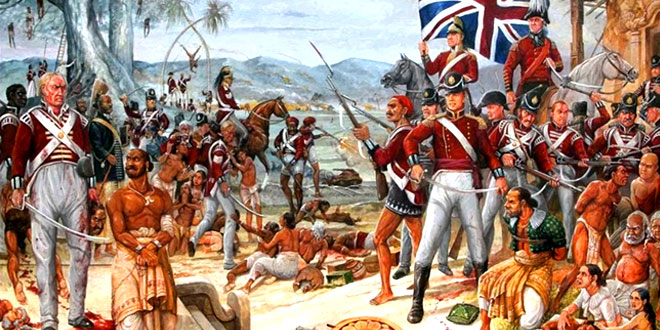Question: By the first decade of the 20th century, a series of changes affected the pattern of industrialization in India. Explain.
Answer:
- Swadeshi and Boycott Movements: The launching of Swadeshi and Boycott Movements after the Partition of Bengal provided impetus to Indian industries. There was an increase in the demand of Indian goods, especially of clothes.
- Industrial groups: Industrial groups had also organised themselves to protect their collective interests, pressurizing the government to increase tariff, the protection, and grant other concessions.
- Decline of exports to China: From 1906. moreover, the export of Indian yarn to China declined since produce from Chinese and Japanese mills had flooded the Chinese markets.
Question: How did it change after the First World War?
Answer: Before the First World War:
- The early cotton mills in India produced coarse cotton yam rather than fabric. Only imported yam was of the superior variety,
- By the first decade of the 20th century, a series of changes affected the pattern of industrialization. Industrialists in India began shifting from yam to cloth production.
- Till the First World War industrial growth was slow. The war created a dramatically new situation.
After the First World War:
- With British mills busy with war production to meet the needs of the army. Manchester imports into India declined. Suddenly. Indian mills had a vast home marker to supply.
- As the war prolonged. Indian factories were called upon to supply war needs e.g.. jute bags, cloth for army uniforms, tents, leather boots, etc.
- New factories were set up and old one; ran multiple shifts over the war years industrial production boomed.
- After the war local industrialists gradually consolidated their position. Substituting foreign manufactures and capturing the home market.
Question: Explain the impact of the First World War on the Indian industries.
Or
Describe the peculiarities of Indian industrial growth during the First World War.
Or
How did the World War prove to be a boon to the Indian Industries? Explain.
Answer:
- Decline of Manchester: With British mills busy with war production to meet the needs of the army. Manchester imports into India declined.
- Increase in demand: With the decline of imports suddenly. Indian mills had a vast home market to supply.
- Demand from army: As the War prolonged. Indian factories were called upon to supply war need;i.e.. jute bags, doth for the army uniforms, tents and leather boots, horse and mule saddles, and a host of other items.
- New factories: New factories were set up. and old ones ran multiple shifts. Many new workers were employed, and everyone was made to work for longer hours. Over the war years, industrial production boomed.
- Downfall of British industry and boon for home industry: After the war Manchester could never recapture its old position in the Indian market. Unable to modernize and compete with the US. Germany and Japan, the economy of Britain crumbled after the war. Cotton production collapsed and exports of cotton cloth from Britain fell dramatically. Within the colonies, local industrialists gradually consolidated their position, substituting foreign manufactures and capturing the home market.
Question: Explain the methods used by producers to expand their markets in the 19th century.
Or
How did the British manufacturers attempt to take over the Indian market with the help of advertisements? Explain with three examples.
Or
“Consumers are created through advertisement”. Support the statement with three suitable examples.
Answer:
- Advertisement: Advertisements through newspapers, magazines, hoarding; were the most important method used by the producers to expand the market. It played a major role in expanding the markets, and shaping a new consumer culture. Advertisements make products appear desirable and necessary.
- Labelling: Labelling was another method used by the producers to expand their market. When Manchester industrialists began selling cloth in India, they cut labels on the cloth bundles.
(i). When buyers saw ‘MADE IN MANCHESTER’ written in bold on the labels, they were expected to feel confident about buying the cloth.
(ii). But labels did not only carry words and texts. They also carried images, and were very often beautifully illustrated. - Calendars: By the nineteenth century, manufacturers were printing calendars to popularize their products. Unlike newspapers and magazines, calendars were used even by people, who could not read. They were hung in tea shops and in poor people’s homes just as much as in offices and middle-class apartments. Those, who hung the calendars had to see the advertisements, day after day, through the year. Even in these calendars, images of gods and goddesses were used to attract the consumers.
- Images of important personages: Along with the images of gods, figures of important personages, of emperors and nawabs were also used. The message very often seemed to say ; if you respect the royal figure, then respect this product; when the product was being used by kings, or produced under royal command, its quality could not be questioned.
- Advertisement by Indian producers: Indian manufacturers were also using the same tactics. When Indian manufacturers advertised, the nationalist message was clear and loud. If you care for the nation, then buy products that Indians produce. Finally, advertisements became a vehicle of the nationalist message of Swadeshi.
 Class Notes NCERT Solutions for CBSE Students
Class Notes NCERT Solutions for CBSE Students





